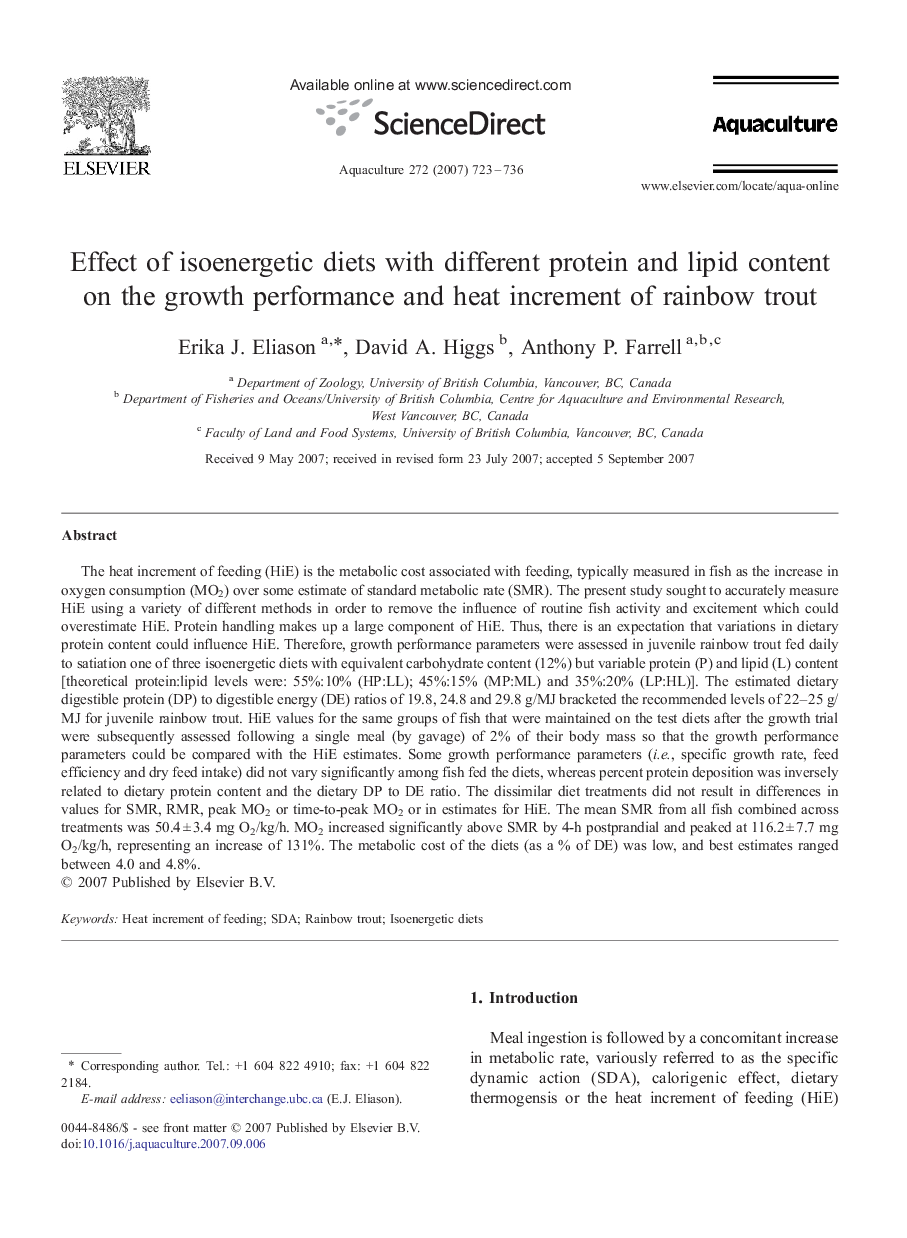| کد مقاله | کد نشریه | سال انتشار | مقاله انگلیسی | نسخه تمام متن |
|---|---|---|---|---|
| 8496724 | 1552970 | 2007 | 14 صفحه PDF | دانلود رایگان |
عنوان انگلیسی مقاله ISI
Effect of isoenergetic diets with different protein and lipid content on the growth performance and heat increment of rainbow trout
دانلود مقاله + سفارش ترجمه
دانلود مقاله ISI انگلیسی
رایگان برای ایرانیان
موضوعات مرتبط
علوم زیستی و بیوفناوری
علوم کشاورزی و بیولوژیک
علوم آبزیان
پیش نمایش صفحه اول مقاله

چکیده انگلیسی
The heat increment of feeding (HiE) is the metabolic cost associated with feeding, typically measured in fish as the increase in oxygen consumption (MO2) over some estimate of standard metabolic rate (SMR). The present study sought to accurately measure HiE using a variety of different methods in order to remove the influence of routine fish activity and excitement which could overestimate HiE. Protein handling makes up a large component of HiE. Thus, there is an expectation that variations in dietary protein content could influence HiE. Therefore, growth performance parameters were assessed in juvenile rainbow trout fed daily to satiation one of three isoenergetic diets with equivalent carbohydrate content (12%) but variable protein (P) and lipid (L) content [theoretical protein:lipid levels were: 55%:10% (HP:LL); 45%:15% (MP:ML) and 35%:20% (LP:HL)]. The estimated dietary digestible protein (DP) to digestible energy (DE) ratios of 19.8, 24.8 and 29.8 g/MJ bracketed the recommended levels of 22-25 g/MJ for juvenile rainbow trout. HiE values for the same groups of fish that were maintained on the test diets after the growth trial were subsequently assessed following a single meal (by gavage) of 2% of their body mass so that the growth performance parameters could be compared with the HiE estimates. Some growth performance parameters (i.e., specific growth rate, feed efficiency and dry feed intake) did not vary significantly among fish fed the diets, whereas percent protein deposition was inversely related to dietary protein content and the dietary DP to DE ratio. The dissimilar diet treatments did not result in differences in values for SMR, RMR, peak MO2 or time-to-peak MO2 or in estimates for HiE. The mean SMR from all fish combined across treatments was 50.4 ± 3.4 mg O2/kg/h. MO2 increased significantly above SMR by 4-h postprandial and peaked at 116.2 ± 7.7 mg O2/kg/h, representing an increase of 131%. The metabolic cost of the diets (as a % of DE) was low, and best estimates ranged between 4.0 and 4.8%.
ناشر
Database: Elsevier - ScienceDirect (ساینس دایرکت)
Journal: Aquaculture - Volume 272, Issues 1â4, 26 November 2007, Pages 723-736
Journal: Aquaculture - Volume 272, Issues 1â4, 26 November 2007, Pages 723-736
نویسندگان
Erika J. Eliason, David A. Higgs, Anthony P. Farrell,